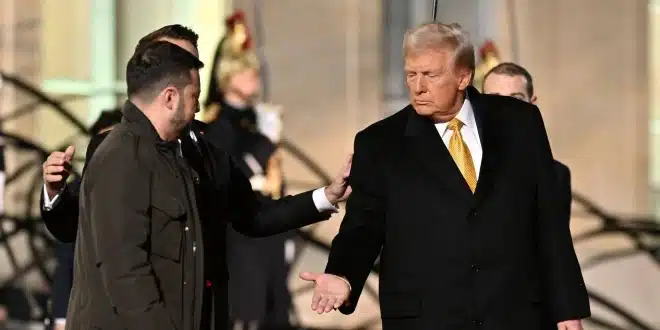U.S. President Donald Trump announced on Saturday that his talks with Russian President Vladimir Putin in Alaska did not produce a ceasefire, emphasizing instead that a permanent peace agreement is the only viable path to ending the war in Ukraine.
Trump’s Position on Ending the War
In a statement shared on Truth Social, Trump argued that ceasefires are often fragile and short-lived, failing to resolve underlying conflicts. He said all parties at the summit agreed that “the best way to end the horrific war between Russia and Ukraine is to go directly to a Peace Agreement,” stressing that only a binding deal could bring lasting stability.
By ruling out a temporary halt to hostilities, Trump positioned his administration as favoring long-term solutions over stopgap measures. His remarks reflect a broader skepticism about ceasefire arrangements, which historically have collapsed in Ukraine and other conflict zones.
Broader Implications of the Alaska Summit
The Alaska meeting marked the first face-to-face discussions between Trump and Putin since the U.S. president’s return to office. While no concrete agreement was announced, Trump’s comments signal that Washington may seek to drive negotiations toward a comprehensive settlement rather than incremental pauses in fighting.
The decision is likely to spark debate among allies, as some European leaders have pushed for a ceasefire as a necessary first step to alleviate humanitarian suffering. For Ukraine, the challenge remains balancing immediate relief on the ground with securing guarantees that could prevent Russia from regrouping and escalating again.
What Comes Next
Trump’s rejection of a ceasefire sets the stage for upcoming talks with Ukrainian President Volodymyr Zelensky, scheduled to take place in Washington. The meeting is expected to focus on how a peace framework could be structured and whether Kyiv would accept terms that prioritize final settlement talks over interim ceasefire deals.
With the war grinding on past its third year, the Alaska summit has underscored the complexities of finding a resolution. Trump’s stance suggests that the U.S. will push for negotiations aimed at closing the war entirely—though whether Russia, Ukraine, and European partners align on this approach remains uncertain.


